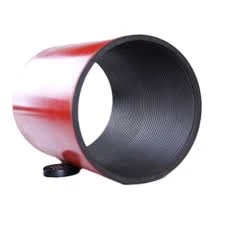- Afrikaans
- Albanian
- Amharic
- Arabic
- Armenian
- Azerbaijani
- Basque
- Belarusian
- Bengali
- Bosnian
- Bulgarian
- Catalan
- Cebuano
- Corsican
- Croatian
- Czech
- Danish
- Dutch
- English
- Esperanto
- Estonian
- Finnish
- French
- Frisian
- Galician
- Georgian
- German
- Greek
- Gujarati
- Haitian Creole
- hausa
- hawaiian
- Hebrew
- Hindi
- Miao
- Hungarian
- Icelandic
- igbo
- Indonesian
- irish
- Italian
- Japanese
- Javanese
- Kannada
- kazakh
- Khmer
- Rwandese
- Korean
- Kurdish
- Kyrgyz
- Lao
- Latin
- Latvian
- Lithuanian
- Luxembourgish
- Macedonian
- Malgashi
- Malay
- Malayalam
- Maltese
- Maori
- Marathi
- Mongolian
- Myanmar
- Nepali
- Norwegian
- Norwegian
- Occitan
- Pashto
- Persian
- Polish
- Portuguese
- Punjabi
- Romanian
- Russian
- Samoan
- Scottish Gaelic
- Serbian
- Sesotho
- Shona
- Sindhi
- Sinhala
- Slovak
- Slovenian
- Somali
- Spanish
- Sundanese
- Swahili
- Swedish
- Tagalog
- Tajik
- Tamil
- Tatar
- Telugu
- Thai
- Turkish
- Turkmen
- Ukrainian
- Urdu
- Uighur
- Uzbek
- Vietnamese
- Welsh
- Bantu
- Yiddish
- Yoruba
- Zulu
Casing and Tubing Joint Designs for Enhanced Oil and Gas Extraction Efficiency
Understanding Casing and Tubing Connections in Oil and Gas Operations
In the oil and gas industry, casing and tubing are critical components used in well construction and production operations. Casing refers to the steel pipe that is inserted into the borehole after drilling to provide structural integrity to the well, while tubing is the pipe through which oil and gas flow from the reservoir to the surface. The connections between these pipes are vital for ensuring operational efficiency, safety, and the overall success of drilling operations.
Types of Casing and Tubing Connections
Casing and tubing connections can be classified into several types, with each designed to meet specific operational needs. The most commonly used connections include threaded, welded, and slip-on connections.
1. Threaded Connections These are perhaps the most recognizable form of connections in the industry. They involve the use of male and female threads to create a secure seal. This type enjoys widespread use due to its ease of installation and disassembly. Threaded connections are commonly found in both casing and tubing applications. However, they may require additional seals such as thread compound or sealant to prevent leaks, making them somewhat dependent on the quality of the installation.
2. Welded Connections Welded connections involve the fusion of two pipe ends to form a permanent bond. This type of connection is extremely effective in preventing leaks and can withstand high-pressure environments, making it suitable for subsea applications. However, the downside is that welded connections can be time-consuming to install and may require specialized equipment and skilled personnel.
3. Slip-on Connections These connections involve sliding a pipe onto another and securing it in place with a collar or clamp. Slip-on connections offer a balance between ease of installation and leak prevention. They are often used in temporary applications or in zones where pressure is not extraordinarily high.
Challenges in Casing and Tubing Connections
Despite their importance, casing and tubing connections face several challenges, primarily related to pressure conditions, temperature fluctuations, and corrosive environments. If not properly designed, installed, and maintained, these connections can fail, leading to catastrophic incidents such as blowouts, leaks, and even environmental disaster.
casing and tubing connections

Corrosion is another significant concern, especially in offshore operations where saltwater can hasten the deterioration of metals
. It is critical for operators to select the right materials and protective coatings to enhance the durability of connections.Technological Advances
Recent advancements in technology have significantly improved the efficiency and reliability of casing and tubing connections. The use of advanced materials, such as high-strength alloys and composite materials, has enhanced performance in hostile environments. Smart technologies are also transforming how connections are monitored and maintained. For example, sensors can now be integrated into the connections to provide real-time data on pressure, temperature, and structural integrity. This not only facilitates preventive maintenance but also ensures timely interventions, thus reducing the risk of failure.
Best Practices for Connection Installation and Maintenance
To achieve optimal performance from casing and tubing connections, operators should adhere to best practices. First, thorough training of personnel involved in the installation process is crucial. Understanding the specifications and requirements of different connection types can significantly minimize the risk of errors.
Additionally, regular inspections and maintenance of connections must be part of the operational routine. Utilizing non-destructive testing methods can help in identifying potential failure points early on. Moreover, adhering to industry standards and guidelines, such as those set by the American Petroleum Institute (API), can enhance safety and efficacy in operations.
Conclusion
Casing and tubing connections are fundamental to the success of oil and gas operations. With their various types and associated challenges, it is clear that attention to detail and innovation in technology are paramount. As the industry evolves, continuously investing in research, training, and adherence to best practices will ensure that these connections not only withstand the demands of modern energy extraction but also contribute to safer and more sustainable operational outcomes.
-
Tubing Pup Joints: Essential Components for Oil and Gas OperationsNewsJul.10,2025
-
Pup Joints: Essential Components for Reliable Drilling OperationsNewsJul.10,2025
-
Pipe Couplings: Connecting Your World EfficientlyNewsJul.10,2025
-
Mastering Oilfield Operations with Quality Tubing and CasingNewsJul.10,2025
-
High-Quality Casing Couplings for Every NeedNewsJul.10,2025
-
Boost Your Drilling Efficiency with Premium Crossover Tools & Seating NipplesNewsJul.10,2025







